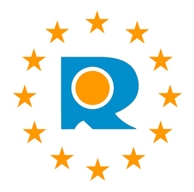We wish all our readers a Merry Christmas and a Happy New Year 2016!
Foto: © AlBakker, [CC BY-NC-ND 2.0]
We wish all our readers a Merry Christmas and a Happy New Year 2016!
Foto: © AlBakker, [CC BY-NC-ND 2.0]
 Beiersdorf AG, manufacturer of Nivea, won a ruling from Germany’s Federal Supreme Court (BGH) that gives it a second chance to defend its trademark for the blue color on its Nivea products in a legal battle with Unilever NV (court case number: I ZB 65/13). On July 9, 2015, the BGH ordered a reopening of the proceedings before the German Federal Patent Court (BPatG).
Beiersdorf AG, manufacturer of Nivea, won a ruling from Germany’s Federal Supreme Court (BGH) that gives it a second chance to defend its trademark for the blue color on its Nivea products in a legal battle with Unilever NV (court case number: I ZB 65/13). On July 9, 2015, the BGH ordered a reopening of the proceedings before the German Federal Patent Court (BPatG).
The suit is part of an long-standing legal battle between the two DAX listed companies over their dark blue colors (Panthone 280 C) used in the Dove and Nivea brands.
“Since 1925, the color Blue stands for the trademark values of Nivea. The blue tin is the ‘face’ of the brand and the basis of the global design language of the Nivea products,” said Inken Hollmann-Peters, Vice President Corporate Communications & Sustainabilitya at Beiersdorf. “That’s why we leave nothing untried to protect the iconic color image.”
In the preceding instance, the BPatG had applied a strict standard, deciding that an abstract color trademark can only be registered or maintained as a registered trademark, if 75 percent of the relevant consumers associate the color with the trademark. The Nivea Blue trademark did not fulfill this strict criterium. However, according to the BGH the threshold must now be lowered to a more moderate 50 percent.
Dr. Wolfgang Büscher, chairman of a panel of five judges at the highest civil court, said one issue at trial was whether “the federal patent court set a standard that is too strict.”
Beiersdorf said it welcomed the decision as it regards the color as a trademark and not only as a decorative background.
The number of law suits over abstract colors are currently on the rise. Mondelez International Inc. and Nestlé SA are fighting over a trademark for the color “purple”, which is used by Mondelez for the packaging of Cadbury’s Dairy Milk bars. Moreover, the BPatG recently ruled in a law suit brought by the Spanish bank Santander SA that a trademark for the color “red” owned by the German Association of Savings and Loans Banks (Deutsche Sparkassen- und Giroverband, DSGV) should be cancelled.
Update (May 10, 2016): The 25th Senate of the Federal Patent Office (BPatG) cancelled the trademark for the color “red” of the German Association of Savings and Loans Banks (BPatG, GRUR 2015, 796). An appeal was filed against this decision, so that the Federal Supreme Court will have the final words in this case (I ZB 52/15).
Foto: Beiersdorf
 The registration process of a trademark in Canada is in some ways extraodinary when compared to the registration practices in other countries.
The registration process of a trademark in Canada is in some ways extraodinary when compared to the registration practices in other countries.
The most important characteristics of the Canadian trademark registration process are summarized below.
Canada belongs to a only a handful of industrialized countries in the world, which have neither joined the Madrid Agreement (Agreement) nor the Protocol of the Madrid Agreement (Madrid Protocol), as discussed elsewhere.
However, since Canada has signed the Paris Convention (PC), the priority of a foreign trademark application can be validly claimed in a Canadian trademark application. Moreover, the applicant can claim the priority of the trademark application in Canada in a foreign trademark filing. A prerequesite of the validity of the priority claim is that the signs and the goods and services of the first and subsequent trademark applications are essentially identical.
Before a trademark can be registered in Canada, the applicant of the trademark must generally use the trademark in Canada. The application may be filed on the basis of a proposed use in Canada or, if the trademark is already used in a a foreign country (use abroad) on the basis of a registered trademark in the country of origin of the applicant. Furthermore, a trademark application may be filed for a mark, which is not yet used in Canada, but has nevertheless become known to the public in Canada.
In Canada, the goods and services claimed are not classified according to Nice classification. The trademark application must only provide a list of goods (Canadian engl. “wares“) and services for which protection is sought. No class fee is charged at the CIPO. However, it should be made sure that the claimed goods and services are used in Canada or that the use of the trademark for the goods and services is at least intended by the applicant (see item 2).
If the trademark application in Canada is filed on the basis of a proposed use, a declaration of use must be filed with the CIPO. In this declaration, the date of the first use of the trademark in Canada must be provided for each of the claimed goods and services. The time limit for filing this declaration can be extended up to three times.
If the trademark application in Canada is filed on the basis of a foreign registration, a trademark certificate must be filed with the trademark office in Canada. If the trademark certificate is not written in English language, a translation thereof into English language must be provided.
After expiry of a time limit of three years from the registration of the trademark in Canada, any third party may request that the applicant provides documentary proof of the use of the trademark. If such a request is filed by a third party, it is necessary to proof the use of the trademark in Canada for each good and service claimed in the application. If no proof of the use can be provided, the trademark will be partially or fully cancelled.
In Canada, some kind of signs are excluded from trademark protection. A simple word, which is predominantely a given name or family name of a person, cannot be protected by a trademark. An exception can be made, if the person whos name should be registered as a trademark has died more than 30 years before the trademark application is filed. Also, as in other countries descriptive or non-distinctive signs cannot be protected by trademarks. The CIPO will assume that the relevant consumers are familiar with both, the English and French languages.
Although it is not required by law to submit a signed power of attorney, the CIPO can request at any time to provide proof that the representative having filed the application in the name of the applicant is authorized by the applicant.
The examination of the tradmark is generally carried out within a time frame of 4 to 8 months after filing the application. The total registration process can typically be completed within a time frame of 18 to 24 months from filing the application.
After the publication of the registration third parties can file oppositions against the registered trademark.
In Canada, the normal term of protection expires 15 years after registration of the trademark. The registered trademark may be renewed every 15 years.
A registered trademark may at any time be cancelled for non-use, if requested by a third party (see item 6).
Foto: © Jamie McCaffrey, [CC BY 2.0]
 On 28 June, the Greek Government imposed capital controls in the latest development in the country’s financial crisis. The capital controls will considerably restrict the flow of capital within the Greek banking sector and will be maintained at least until July 6, 2015, maybe even longer.
On 28 June, the Greek Government imposed capital controls in the latest development in the country’s financial crisis. The capital controls will considerably restrict the flow of capital within the Greek banking sector and will be maintained at least until July 6, 2015, maybe even longer.
For applicants or proprietors of industrial property (IP) rights in Greece, such as patents, trademarks, designs etc., the following implications can be expected.
1. Registered IP rights, including patents, trademarks, designs and SPCs, are in no jeopardy with regard to either their validity or their enforceability in Greece. The same applies to European patents which have already been validated in Greece, European patent applications designating Greece, Community trademarks or Community designs designating Greece or international trademark registrations extending to Greece.
2. Official fees, including those due for filing, validation, maintenance and any other type of official fees can still be validly paid to the Greek Patent Office, because payment orders via web banking are still allowed in accordance with the aforementioned decree.
Likewise, international bank transfers, including SEPA remittances, to (but not from) bank accounts of domestic IP agents in Greece will not be affected.
3. Court fees can still be paid without restrictions.
To sum up, even after the introduction of capital controls in Greece we do not expect that the restrictions will have serious adverse implications at least in the fields of intellectual property law. In particular, we do not believe that the measures taken by the Greek government will jeopardize any IP rights registered or granted in Greece.
At present it is still unclear what the result of the plebiscite (referendum) scheduled for July 5, 2015 will be and what conclusions could ultimately be drawn therefrom. From the perspective of the Greek government, the referendum will not yet decide whether or not Greece should stay in the euro area, though an involuntary exit of Greece (or Grexit) appears significantly more likely in case of a no-vote. A short-term solution to the debt problem seems unlikely under any circumstances.
Depending on the outcome of the referendum, the following possible scenarios are possible:
Before it is possible to grant a third aid program for Greece, a number of national parliaments in Europe will have a vote first. Therefore, it would seem likely that regardless of the outcome of the referendum on 5 July 2015, the capital controls already introduced need to be maintained. Since, the emergency liquidity assistance (ELA) credit line of the ECB is already exhausted, these measures cannot be canceled and are necessary for Greek banks to survive. It also seems unlikely that the ECB will increase the credit line, after the default of a payment to the IMF.
Even in the event that the Greek Government introduces a parallel currency alongside the Euro as a measure to increase the capacity to act, no differences are likely to arise as long as the euro is still accepted as a currency.
Although it is still under discussion, whether or not a Member State of the European Union (EU) can leave the euro area and at the same time remain a member of the EU, this option would probably be preferred by most European governments, if Greece decided to abandon the Euro as its official currency (especially in the case of a no-vote). Another possibility would be a temporary exit of the EU for a short time period, whereby Greece could join the EU again under pre-defined conditions. The euro may then not be adopted as an official currency.
Compared to Scenario 1, no significant differences arise. Only the administrative and court fees would have to be paid in the newly created currency (for example a new Greek drachma).
If Greece should leave the euro area and the EU, it would have no immediate impact in the fields of intellectual property law. The European Patent Convention (EPC) is an international treaty, which is independent of the European Union. Numerous non-EU countries (e.g. Norway, Switzerland) are member states of the EPC, but not member states of the EU. In case of an exit of Greece from the EU, European patents can still be validated in Greece. A Greek exit from the EU will have no effect on existing IP rights in Greece.
Any pending or registered Community Trademarks (CTMs), or pending or registered Community designs (RCDs) can be converted to national rights. Therefore, if Greece should exit the EU, the pending or registered IP rights may be continued at a national level. In this case, a Greek national IP right can be registered parallel to the European IP right (effective for all other EU countries) by filing a request for conversion, while the filing date of the IP right remains intact. A loss of right is unlikely as long as the due date for filing the request for conversion is monitored and complied with.
Since no unitary patents, i.e. a European patent granted by the European Patent Office with unitary effect in the EU, have been granted, it is unclear whether a Greek exit from the EU will have an impact on the system of European unitary patents. However, with regard to the legal uncertainties related to the British referendum scheduled for 2017 (and a possible Brexit), as well as on a similar referendum pending in Austria, we tend to advise against make extensive use of the European unitary patent system, which appears even more advisable in view of the fact that the costs for maintaining unitary patents and for nullification and infringement proceedings are at present still unknown.
Foto: © Jochen Zick, action press, [CC BY-ND 2.0]

The author and Jacqueline Bhabha at the Mitrovica Bridge, which separates Albanians in the south from Serbians in the north of Kosovo.
In December 2014, local residents of Llaushë/Lauša village, in the city of Skenderaj in northern Kosovo, approached the Department of Forensic Medicine and reported a possible mass grave in the village cemetery. Four bodies had been buried there in the late nineties, during the Kosovo War, they said. In late April of this year, forensic experts from the European Union Rule of Law Mission in Kosovo (EULEX) exhumed the remains for further investigation.
Most of the time, the challenges faced by Roma people in Kosovo attract hardly any attention. But over the last several weeks the media have intensively questioned the exhumation. Some journalists have called it a “mistake,” claiming that the site is in fact not a mass grave, and that the remains had originally lain elsewhere and been reburied in 2002.
Media reports identify the remains as belonging to a Roma mother and two of her children, with one other person, who were killed on March 5, 1998, during the war, together with members of the prominent Albanian Jashari family. According to one report — which cited a resident of Llaushë — the bodies were first placed in a garage by Serbian forces following the end of military operations. The remains were then buried in the Jashari family cemetery with the slain family. After the war, because they were not members of the family, the bodies of the three Roma individuals were removed and reburied in the village cemetery, where they were found in December.
The story in the media centers on EULEX’s involvement rather than on the Roma losses. The exhumation is discussed without questions or comment about the state-sponsored wrongs inflicted against Roma people in Kosovo. Prior, during, and in the aftermath of the war, and even after NATO deployment, there were reported killings of Roma, Ashkali, and Egyptians in the region. Suspecting the Roma and Ashkali for having collaborated with the Serbs during the war, extremists conducted horrific campaigns of ethnic cleansing.
Research on this period has recorded ethnically motivated murders of Roma throughout Kosovo. According to some sources, more than 100,000 Roma, Ashkali, and Egyptians were forced to flee the region due to massive violence. Of the 19,500 Roma houses that stood before 1999, 14,500 were destroyed at that time.
Fact finding missions have uncovered violations such as rape, torture, illegal detention, and destruction of property on a large scale. Renewed ethnically motivated clashes occurred in March 2004. Mass unrest, violence, and civil-war like conditions were directed mainly against ethnic minorities, resulting in the destruction of a further 700 homes; 4,000 Serbs, Roma, Ashkali, and Egyptians fled in panic and fear for their lives.
Today, although the security situation has improved due to the commitment of the international community, the crimes committed against the Roma during this period have yet not been fully investigated and prosecuted. In many cases witnesses did not appear before the court, and delays and lenient sentences were widespread, in the years after 2004, specifically. Further judiciary responses, with a specific focus on crimes against ethnic minorities, are still necessary.
Measures have been taken to protect ethnic minorities in Kosovo, including the Roma, since the adoption of UN Security Council Resolution 1244 in 1999 and due to the continued presence of the international community. This is encouraging. The European Union has recently funded a large housing project for Roma in Mitrovica in Northern Kosovo, while a number of NGOs have focused on providing medical and educational assistance. Finally, with four seats in the national assembly, Roma, Ashkali, and Egyptian representatives can in theory take part in the political decision-making of Europe’s youngest country.
However, despite these advancements, much remains to be done. As noted by the Head of the OSCE Mission in Kosovo on the occasion of this year’s International Roma Day, Kosovo’s Roma population continues to suffer the effects of discrimination, limited access to education, high unemployment, and other persistent forms of marginalization. It remains to be seen whether the country is able to create a sustainable climate which can provide Roma people with a secure home, a tolerant society, and strong prospects for the future.
 Invented in the 1970s, the Rubik’s Cube fascinates people around the globe and is one of the world’s best-selling toys. While many fans found the magic cube a hard nut to crack, a German toy manufacturer has challenged the registered trademark for the 3-dimensional shape of the cube before the General Court (European Union). The Court has now decided that the trademark registration cannot be denied.
Invented in the 1970s, the Rubik’s Cube fascinates people around the globe and is one of the world’s best-selling toys. While many fans found the magic cube a hard nut to crack, a German toy manufacturer has challenged the registered trademark for the 3-dimensional shape of the cube before the General Court (European Union). The Court has now decided that the trademark registration cannot be denied.
In 1999, the British toy manufacturer Seven Towns, which manages the IP rights relating to the Rubik’s Cube, filed a Community trademark (CTM) application for the three-dimensional trademark (3D or three-dimensional trademark) with the Office for Harmonization in the Internal Market (OHIM) in Alicante.
In 2006, Simba Toys, a German company competing with Seven Towns Simba Toys, filed a request for a declaration of invalidity of the trademark on the grounds that the trademark merely involves a technical solution consisting of its rotating capability, thereby lacking the necessary distinctiveness. Simba argued that a technical solution can essentially only be protected by patents, but is not accessible to trademark protection.
The OHIM rejected the cancellation request, thereby causing Simba Toys to file an appeal against the decision with the General Court (EGC) in Luxembourg. However, according to a recent press release of the EGC this appeal was now dismissed (decision of November 25, 2014, case number: T-450/09).
The EGC noted that the essential features of the contested trademark are the shape of the mark on the one hand and the black lines on the sides making up part of the structure and dividing the grip into squares on the other hand. These two elements are clearly visible in the graphic representation of the trademark, which is required under Art. 4 CTMR. Consequently, the trademark can be protected as a CTM because it can be represented graphically and is also able to distinguish the goods or services of one party from those of other parties.
In the proceedings Simba Toys suggested that the relevant public will perceive the black lines as serving the function of dividing the cube into individual elements and serving a technical function because they enable the elements to be moved around. But the court did also not follow this argumentation. According to the court it is not the black lines or the grid that allows a movement of the elements, but the invisible rotating mechanism inside the Rubik’s cube. Therefore, the trademark cannot be denied registration as a CTM on this basis.
With regard to the requisite distinctive character of the mark it is the cubic grid structure which clearly differs in the contested trademark and the representation of other three-dimensional puzzles on the market. Therefore, the structure has a distinctive character which enables consumers to see the structure as an indication of the origin of the products.
Within a time limit of two months Simba Toys may still file an appeal against the decision of the EGC. The case would then be reviewed once more by the European Court of Justice (ECJ).
Conclusion:
Contrary to popular belief, trademark protection is not limited to word or figurative marks, but can also extend to other types of marks, such as 3D marks. A trademark directed to the shape of the product may under certain preconditions supplement the patent protection. A flanking protection by a trademark might have an economic impact because patent protection only lasts 20 years, whereas trademark protection may be extended indefinitely as long as the maintenance fees are duly paid.
Foto: © Sonny Abesamis, [CC BY 2.0]
 The European Patent Office (EPO) has announced in a recent press release that the agreement on the validation of European patents between the EPO and Morocco will enter into force on March 1, 2015. With the recognition of the EPC, Morocco has become the first country which is not a member of the European Patent Organisation but gives the same legal effects to a European patent as a national patent on its territory.
The European Patent Office (EPO) has announced in a recent press release that the agreement on the validation of European patents between the EPO and Morocco will enter into force on March 1, 2015. With the recognition of the EPC, Morocco has become the first country which is not a member of the European Patent Organisation but gives the same legal effects to a European patent as a national patent on its territory.
With the entry into force of the agreement, it is thus possible to obtain patent protection in Morocco by having a European patent granted by the European Patent Office. A national granting procedure in Morocco is no longer necessary. However, in order to validate the European patent in Morocco, the payment of a so-called validation fee is necessary. The due date for paying the validation fee is the same as the due date for the payment of the fees for extending the European patent to any extension states (currently Montenegro and Bosnia and Herzegovina), i.e. the time limit is 6 months from the notice of the publication of the European search report. For Euro-PCT applications the validation fee will be due at the time for entering of the application into the European phase before the EPO.
Taking into account the current EPC contracting states and extension states, including Morocco, a European patent can now provide patent protection in a total of 41 European and non-European countries.
Comments:
Since 2010, the EPO has signed validation agreements with three non-EPC member states (see table below).
It can be expected that validation agreements will be concluded with further non-European countries.
| Country: | Agreement: | Signature date: | Time of entry into force: |
| Morocco (MA) | Agreement between the Government of the Kingdom of Morocco and the European Patent Organisation on validation of European patents | December 17, 2010 | March 1, 2015 |
| Republic of Moldova (MD) | Agreement between the Government of the Republic of Moldova and the European Patent Organisation on validation of European patents | October 16, 2013 | November 1, 2015 |
| Tunisia (TN) | Agreement between the Government of the Republic of Tunisia and the European Patent Organisation on Validation of European patents | July 3, 2014 | – |
Last time this table was updated: January 15, 2016.
Foto: © weisserstier, [CC BY 2.0]
 Interview with Dr. Dirk Franke. The following topics are covered: the future of the profession of a European patent attorney, patent litigation costs, trivial patents; how to find a qualified patent attorney, EU patent (unitary patent), changes in the European patent system over the next 15 to 25 years
Interview with Dr. Dirk Franke. The following topics are covered: the future of the profession of a European patent attorney, patent litigation costs, trivial patents; how to find a qualified patent attorney, EU patent (unitary patent), changes in the European patent system over the next 15 to 25 years
Summary of Interview (pdf, in German)
Published on Dec. 15, 2014 | Source: Akademische Blätter, issue IV/2014
We wish all our readers a Merry Christmas and a Happy New Year 2015!
Foto: © Ashwin Chandrasekaran, [CC BY 2.0]
 Applicants for European community trademarks (CTM applications) are currently receiving fake invoices from a British service provider called “OMIH – Trademarks and Designs Registration Office”.
Applicants for European community trademarks (CTM applications) are currently receiving fake invoices from a British service provider called “OMIH – Trademarks and Designs Registration Office”.
The fine print of the fake invoices mentions that the message is only an offer, but not an invoice. This means that the recipient of the message has no obligation to pay. This information is, however, hardly legible or even noticable. The overall appearance of the invoices resembles the standard communications sent out by the OHIM. Also the reference numbers mentioned in the invoices are identical to the reference numbers mentioned in the official register.
It is quite amazing that at least some applicants for European community trademarks still fall prey to this kind of fraud. If an applicant is legally represented before the OHIM by an appointed OHIM professional representative he will never receive any official communications directly from the office. The OHIM will alway contact the applicant’s representative who is acting on behalf of his client.
Moreover, the OHIM will never send out any “invoices” asking to pay official fees.
Update 1 (August 2, 2014): According to our information, at least the following two different bank accounts are currently used by “OMIH”: